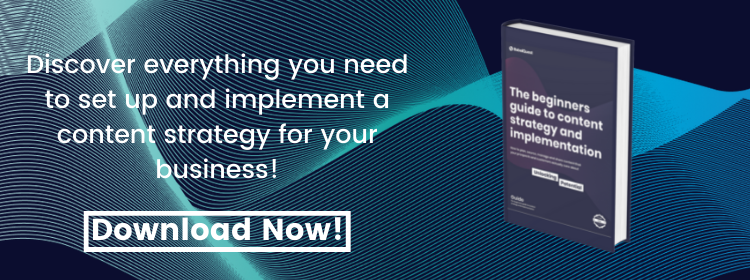The Easter Bunny has some content marketing storytelling lessons to share. What will you learn and how could it help your marketing stories to move minds, sway hearts, and drive sales?
It's that time of the year again when millions of marketers dive headfirst out of the office and into pools of liquid Dairy Milk. For this, we have the Easter Bunny to thank.
- Originating out of Germany, legend has it that the Easter Bunny lays (!), decorates, and hides eggs as a symbol of new life.
- If you're reading this from Switzerland, you might be waiting on a visit from a cuckoo.
- Up until a few centuries ago in Germany, it was a fox.
Regardless of who your dealer is, the remarkable story surrounding the holiday continues to capture children’s imaginations year after year.
The concept of a rabbit delivering eggs might not lend itself so well to your SaaS marketing, but marketers across all industries and business sizes are advised to take note: the storytelling lesson still stands.
Stories are how people make sense of themselves and the world around them, giving context and meaning to information that would otherwise be forgotten hours, minutes, or seconds later. They can be told across a variety of forms, from articles and case stories to engaging video marketing. Most importantly in my opinion, they appeal to our emotions, and for this reason if nothing else they belong in all areas of your marketing.
So where can you find stories, and how can you use the power of storytelling to drive successful content marketing?
 The power of content marketing storytelling
The power of content marketing storytelling
Storytelling isn’t easy. We’ve all read a book or watched a film and been disappointed. If the story doesn’t hook you in the first few minutes, you’ll find your mind wandering. If it takes a turn that doesn’t make sense to you, you’ll feel confused. Inconsistencies in the narrative can break the illusion and damage your faith in the story. If it doesn’t end in a satisfying way, you’ll probably leave a negative review somewhere.
The same is true of content marketing storytelling. As a starting point, we recommend you pay attention to these four key areas when drafting a piece of narrative content.
1. Character
It's no secret that marketers have a tendency to put their company or brand centre stage in their content. This is probably one of the biggest reasons why businesses new to content marketing struggle. Nobody wants to read a piece of content about your brand. That’s an advert.
To tell an engaging story, put your target buyer centre stage. This shouldn’t be difficult, if you’ve been thorough with your buyer personas. You know them inside out. Make it as easy as possible for the reader to imagine themselves in the scenario you’re relating and they’ll be engaged to the end.
2. Conflict
You have your character. Where is the conflict? What is the tension? What is happening to make the story interesting, surprising, or cautionary?
By building your personas’ challenges into their stories, you are including challenges that you know your reader can relate to. Now they’re not only imagining themselves in the story, they’ve invested in it. They feel the character’s struggle and they want to see it resolved.
3. Story arc
Stories have beginnings, middles, and ends. This is how we experience stories and this is how we expect them to unfold. By building this arc clearly into your content, you provide a familiar framework that the reader understands and can follow.
You can use story arc in more creative ways, too. Consider offering a gated resource, checklist, or some other download as the resolution to the story. If it's a logical next step in the story you're telling and the reader is invested, then they’re more likely to convert.
4. Keep it real
Reality is not something we always immediately associate with stories, but even fiction depends on it to engage the reader. If the representation of a character isn’t convincing, for example, the story’s hold often breaks. If their emotions don’t seem genuine, we don’t relate.
In the context of narrative content, this comes back to trust and plausibility. Root your content in something tangible and relevant to the buyer persona’s situation, like a real-life case study, and the reader is far more likely to engage with it. Use real-life details and examples to maintain authenticity.
It’s important to take your reader on a journey, from the moment they arrive at your homepage right up until they decide to reach out to you for help. And increasingly, as traditional SEO becomes less relevant and search engines become smarter, stories are your way of connecting with a prospect, of starting a conversation.
Other content marketing storytelling best practices
Use content to create emotional appeal. Consider the emotional response you are trying to get from the reader. Why should they care, what is the difference between your story and someone else's?
Be consistent, authentic and unique. This applies to your whole content and what your business has to offer, based on your buyer personas’ needs. What makes your story fascinating? Consistent content helps get your prospects to understand you, trust you and remember you.
Keep the story clear and concise. Cut through the fluff and don’t say in 20 words what could be said in two. Read our article on the art of business storytelling for nine awesome tips from professional novelists, storytellers, and content pros.
Create a defined tone of voice Create a word bank, a brand dictionary and include examples of tone of voice. Discover how to write a simple yet effective tone of voice guide for your business.
7 storytelling marketing tips, straight from the rabbit's mouth
- Consider whether or not your target audience share it. Is it something worthy of their remarks? If so, it's probably remarkable
- Offer a unique — or even controversial — perspective on a topic
- Where possible, include original data to provide genuine value
- Review whether or not you're using the best form or channel to tell the story
- Make it thought-provoking
- Convey the story or idea in a way that is accessible to its target reader
- Ensure that both the overall content and it delivery exemplify a high standard of quality
Stories excite us in ways that facts and statistics can’t and that's powerful, especially when you've got your content marketing cap on. What stories could your organisation share?
Discover how to harness the power of storytelling in your content marketing and produce B2B content that hits its goals every month. Download our Beginner's Guide to Content Strategy and Implementation below.
Heading
Separated they live in Bookmarksgrove right at the coast of the famous Semantics, large language ocean and many more stuff and more more more


Tom is BabelQuest's Principal Copywriter. He has a PhD in Creative Writing from the University of Southampton and is a novelist with Sparkling Books.




.png?width=50)

.png?width=50)
.png?width=50)


































